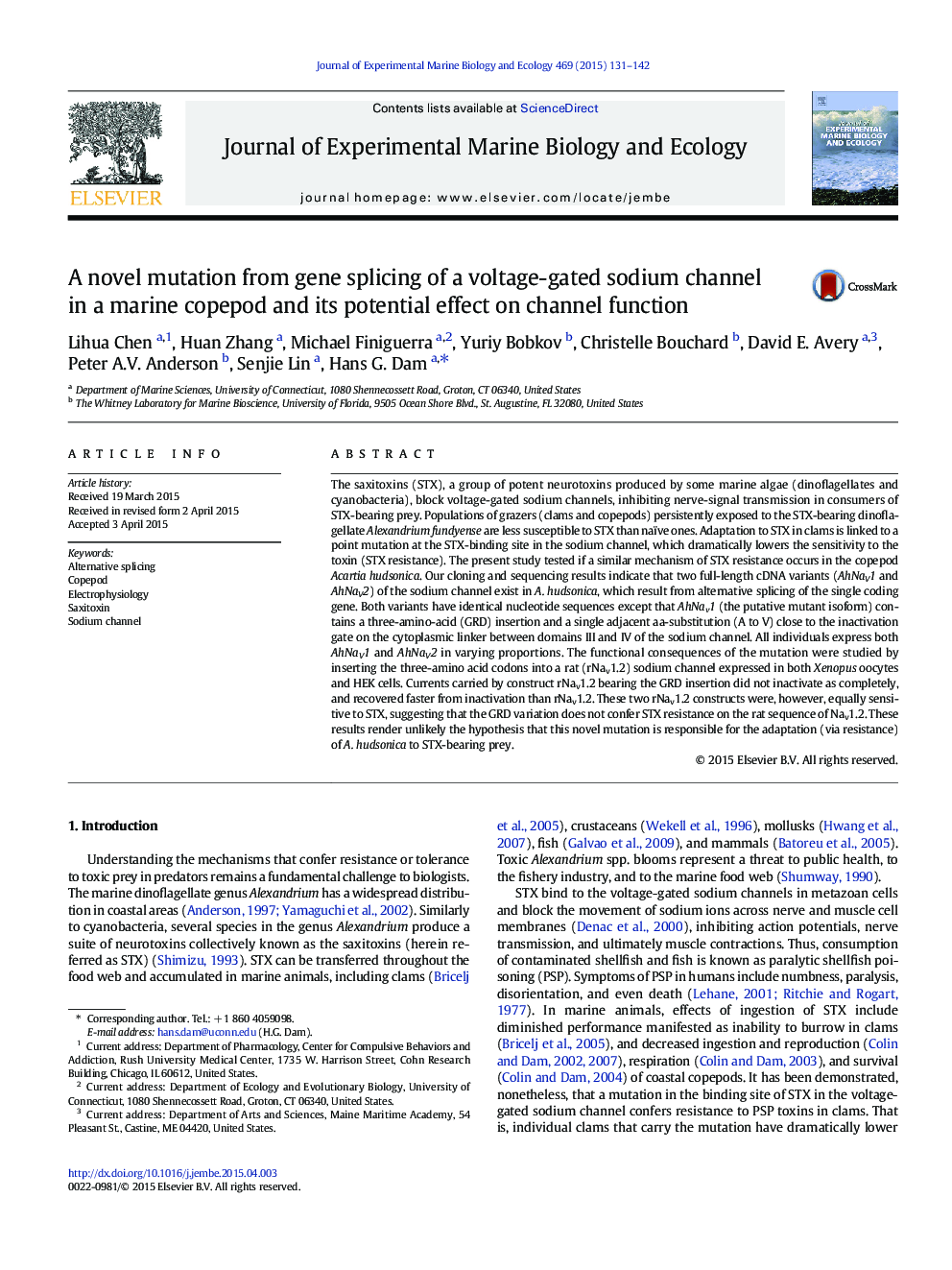| کد مقاله | کد نشریه | سال انتشار | مقاله انگلیسی | نسخه تمام متن |
|---|---|---|---|---|
| 4395428 | 1618406 | 2015 | 12 صفحه PDF | دانلود رایگان |
عنوان انگلیسی مقاله ISI
A novel mutation from gene splicing of a voltage-gated sodium channel in a marine copepod and its potential effect on channel function
ترجمه فارسی عنوان
یک جهش جدید از پراکندگی ژن کانال سدیم ولتاژ در یک اپوکسی دریایی و اثر بالقوه آن بر عملکرد کانال
دانلود مقاله + سفارش ترجمه
دانلود مقاله ISI انگلیسی
رایگان برای ایرانیان
کلمات کلیدی
موضوعات مرتبط
علوم زیستی و بیوفناوری
علوم کشاورزی و بیولوژیک
علوم آبزیان
چکیده انگلیسی
The saxitoxins (STX), a group of potent neurotoxins produced by some marine algae (dinoflagellates and cyanobacteria), block voltage-gated sodium channels, inhibiting nerve-signal transmission in consumers of STX-bearing prey. Populations of grazers (clams and copepods) persistently exposed to the STX-bearing dinoflagellate Alexandrium fundyense are less susceptible to STX than naïve ones. Adaptation to STX in clams is linked to a point mutation at the STX-binding site in the sodium channel, which dramatically lowers the sensitivity to the toxin (STX resistance). The present study tested if a similar mechanism of STX resistance occurs in the copepod Acartia hudsonica. Our cloning and sequencing results indicate that two full-length cDNA variants (AhNaV1 and AhNaV2) of the sodium channel exist in A. hudsonica, which result from alternative splicing of the single coding gene. Both variants have identical nucleotide sequences except that AhNav1 (the putative mutant isoform) contains a three-amino-acid (GRD) insertion and a single adjacent aa-substitution (A to V) close to the inactivation gate on the cytoplasmic linker between domains III and IV of the sodium channel. All individuals express both AhNaV1 and AhNaV2 in varying proportions. The functional consequences of the mutation were studied by inserting the three-amino acid codons into a rat (rNav1.2) sodium channel expressed in both Xenopus oocytes and HEK cells. Currents carried by construct rNav1.2 bearing the GRD insertion did not inactivate as completely, and recovered faster from inactivation than rNav1.2. These two rNav1.2 constructs were, however, equally sensitive to STX, suggesting that the GRD variation does not confer STX resistance on the rat sequence of Nav1.2. These results render unlikely the hypothesis that this novel mutation is responsible for the adaptation (via resistance) of A. hudsonica to STX-bearing prey.
ناشر
Database: Elsevier - ScienceDirect (ساینس دایرکت)
Journal: Journal of Experimental Marine Biology and Ecology - Volume 469, August 2015, Pages 131-142
Journal: Journal of Experimental Marine Biology and Ecology - Volume 469, August 2015, Pages 131-142
نویسندگان
Lihua Chen, Huan Zhang, Michael Finiguerra, Yuriy Bobkov, Christelle Bouchard, David E. Avery, Peter A.V. Anderson, Senjie Lin, Hans G. Dam,
